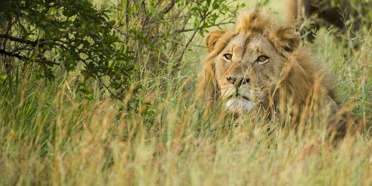- You are here:
- Home
- Countries & Parks
- Mozambique Parks
- Limpopo National Park
Overview – Limpopo NP

Philip is a renowned Africa expert and author of many guidebooks to African destinations, including the Bradt guide to Mozambique.
Philip is a renowned Africa expert and author of the Bradt guidebook to Mozambique.
Philip is the author of the Bradt guidebook to Mozambique.
Limpopo National Park is the Mozambican counterpart of South Africa’s Kruger National Park. The two share a 200km/125mi border (unfenced in parts) and form part of the Great Limpopo Transfrontier Conservation Area (GLTFCA), which also incorporates Mozambique’s Banhine and Zinave National Parks and Zimbabwe’s Gonarezhou National Park. All the Big Five are present, but numbers are very low.


Pros & Cons
- Large ecosystem
- Can be visited from Kruger via a border crossing
- Transit corridor between Kruger and the Mozambican coast
- Limited choice of accommodations
- Animals are skittish and wildlife densities are very low
- Very limited road network
- Human encroachment
Limpopo NP Safari Reviews
- Expert Rating
- Wildlife
- Scenery
- Bush Vibe
- Birding
- User Rating 0.0/5– 0 Reviews
- Wildlife
- Scenery
- Bush Vibe
- Birding
Wildlife
Although Limpopo NP is a Big Five destination, you probably won’t see a lot of wildlife. Animals are very dispersed and skittish, and there are almost no roads. Creatures you’re most likely to see are buffalo, zebra, impala, greater kudu and steenbok. Elephants are more often heard trumpeting deep in the bush than they are seen. If you stay overnight in the park, listen out for spotted hyenas whooping and lions roaring.
Scenery
Limpopo NP is mostly located in the Lowveld, but this flat land rises up to the Lebombo Mountains on the border with Kruger. There are several big rivers including the scenic Olifants River. At the main entrance to the park, the Olifants River dams up to form a body of water covering more than 120km²/46mi².
Activities
The park is mainly a self-drive destination. The road network is limited, but there is a 4x4 vehicle route for the adventurous. Canoeing, fishing and walking safaris used to be on offer, but they are no longer available following the closure of the only private tourist lodge a few years back. These activities may resume if and when the lodge reopens, but this is unlikely to happen anytime soon.
Weather & Climate
Limpopo NP has defined Wet and Dry seasons, which correspond with the summer and winter of the southern hemisphere (at opposite times to summer and winter in Europe, North America and Asia). Days tend to be hot during the summer (November to April) and it can get very chilly at night during the winter (May to October).
Best Time To Visit
Wildlife viewing in the park is best from July to October, during the middle and end of the Dry season. At this time, the bush is thinner and animals stay closer to reliable water sources. It does, however, get very hot at the end of the Dry season before the rains break the heat. Bird-watchers might enjoy the lush Wet season months from November to April.
Want To Visit Limpopo NP?
Limpopo NP Safari Reviews
- Expert Rating
- Wildlife
- Scenery
- Bush Vibe
- Birding
- User Rating 0.0/5– 0 Reviews
- Wildlife
- Scenery
- Bush Vibe
- Birding
Most Helpful Expert Review

Ariadne is a renowned African wildlife photographer whose work is featured in many well-known guidebooks and magazines.
A 4x4 Wilderness Adventure
The 11,000km2 Limpopo National Park borders Kruger National Park on the South Africa side. Since the Great Limpopo Transfrontier Park treaty was signed in 2002, almost 5,000 animals have been translocated from Kruger to Limpopo National...


 Mozambique Parks
Mozambique Parks
